Arborio rice is a special type of rice that really stands out in cooking, especially Italian! I'll share what makes this rice unique, how it's different from orzo, its various uses other than the popular risotto, and how to cook it perfectly following the absorption method.
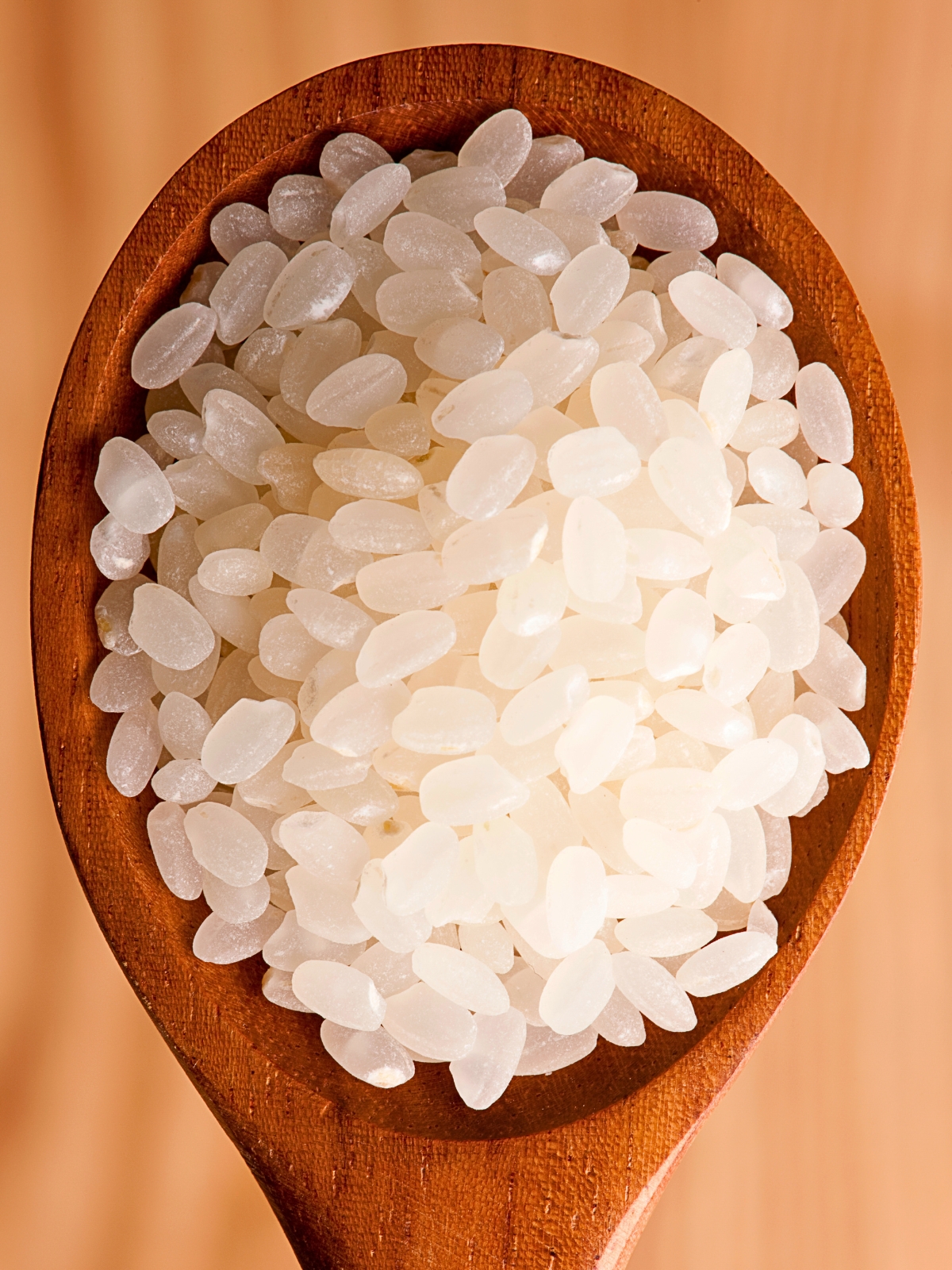
Jump to:
🌾 Grain Highlights
- Arborio Rice Origins: In the article below, I share what I learned about Arborio rice, a short-grain rice from Piedmont, Italy. Its starch content provides a creamy texture and robust flavor, perfect for creamy risotto.
- Culinary Versatility: Beyond risotto, Arborio rice shines in arancini, suppli’, paella, and desserts like rice pudding due to its flavor absorption and starch release.
- Cooking Method: I will share how to cook this rice following the absorption method. Simply toast it in oil, then simmer with water to achieve fluffiness. The water to rice ratio is 2:1, and I suggest using volume rather than weight to measure the ingredients out for this specific type of rice!
❓What is Arborio Rice?
Arborio rice is a superfino variety of short-grain rice, named after the town of Arborio in Italy's Piedmont region, where it is traditionally cultivated. It's one of the largest among the short-grain Italian rice varieties in the species Oryza sativa japonica. This unique grain is characterized by its short, plump, and oval shape.
This rice type is renowned for its high starch content, which is known as amylopectin. When cooked, the amylopectin releases, lending the rice its signature creamy texture.
The high-starch content of arborio rice not only gives it a creamy texture when cooked but also a bold grain taste. This characteristic makes this rice particularly well-suited for dishes that require a rich, creamy consistency, such as risotto. If you're interested in alternatives to arborio rice, check out this article on arborio rice substitutes.
🆚 Arborio Rice vs Orzo
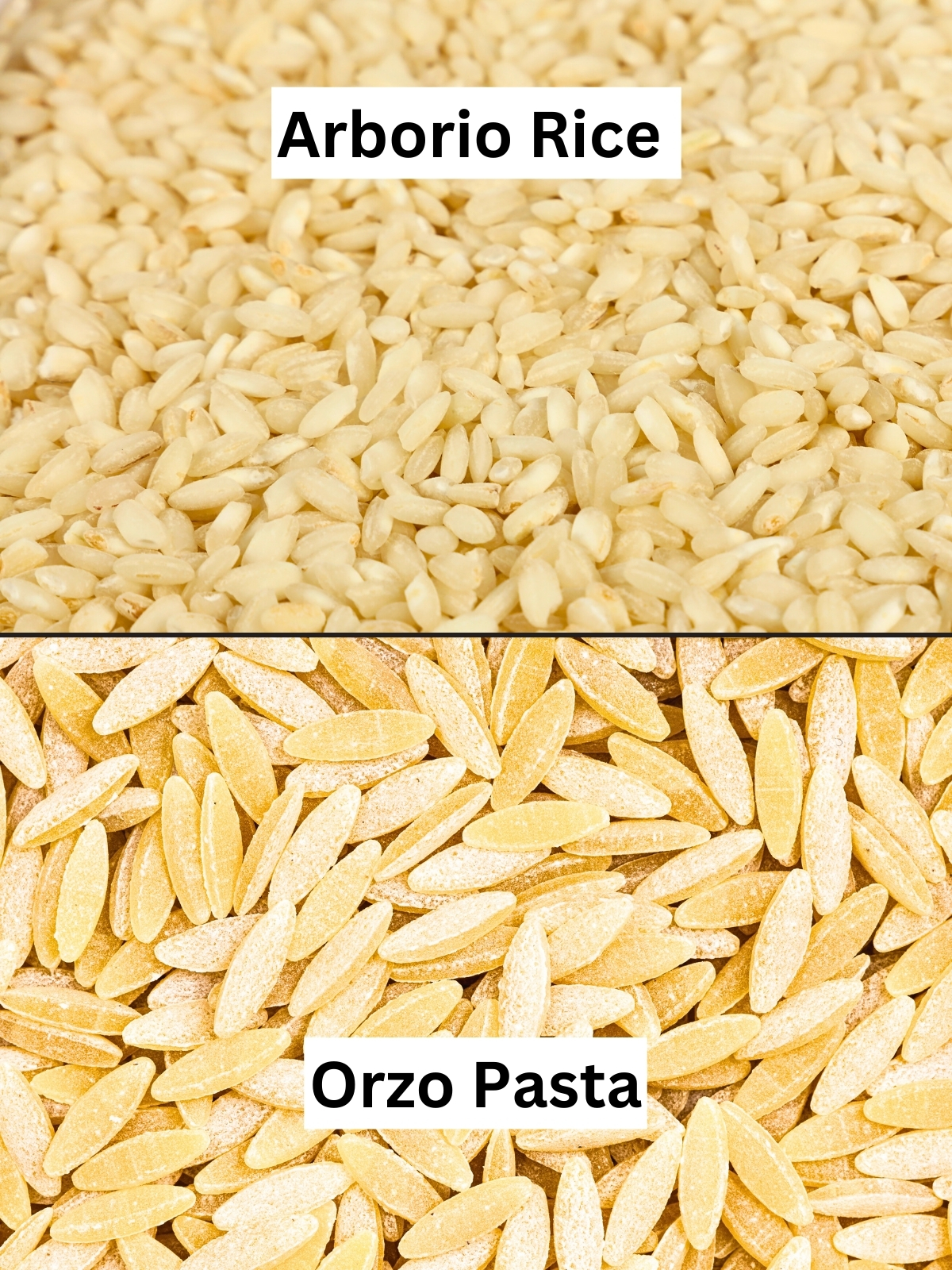
Orzo, despite its grain-like appearance, is actually a type of pasta. It's small, shaped like a grain of rice, and often used in soups and salads. When cooked, it has a slightly chewy texture, similar to more traditional forms of pasta.
On the other hand, arborio rice is a short-grain rice used primarily in the Italian dish risotto. Unlike orzo, arborio rice absorbs liquid and releases starch as it cooks, creating a creamy, rich dish.
While you can use orzo as a substitute for arborio in some dishes, they will yield different textures and flavors.
🍱 Uses in Cooking
1. Risotto
Arborio rice risotto is the most famous of its uses! This Italian dish hinges on the creamy texture that the risotto rice develops when cooked slowly and stirred often. You gradually add broth, wine, and other ingredients, allowing the rice to absorb these flavors. A classic example is Risotto alla Milanese, where the rich flavors of saffron and Parmesan cheese complement the creamy rice. For something different try mushroom and salmon risotto or salmon and saffron risotto.
The best risotto is obtained on the stove, where the constant stirring releases the starch. Risottos cooked in a rice cooker won't have the same creamy texture - it is a work of love!

2. Arancini and Suppli'
Both arancini and suppli' are beloved Italian streetfood that features Arborio rice.
Arancini are Sicilian rice balls, stuffed with cheese, meat, or vegetables, coated in breadcrumbs, and fried. Arborio rice is cooked, shaped around fillings like ragù and mozzarella, then fried for a crispy exterior and creamy interior.
Suppli' are Roman rice croquettes, prepared similarly to arancini, but they are mostly filled with ragu', mozzarella, and sometimes peas.
Both these traditional foods are sometimes prepared suing other short grain rice varieties, such as Carnaroli rice.
3. Paella
While paella traditionally uses bomba rice, arborio is a good substitute. The rice absorbs the robust flavors of the broth and ingredients like seafood, chicken, and vegetables. Unlike risotto, paella requires minimal stirring after the initial mix to form a pleasing crust at the bottom called 'socarrat' (source).
4. Rice Pudding
The creamy texture of arborio rice also lends itself well to sweet dishes like rice pudding. The rice grains soften when simmered in milk and sugar, resulting in a smooth, creamy dessert. You can enhance the flavor with additions like vanilla, cinnamon, or nutmeg.
5. Stuffing
Arborio rice makes for a great stuffing base. It's particularly suitable for stuffed vegetables like bell peppers or tomatoes. As the vegetables cook, their juices are soaked up by the rice, creating a flavorful and satisfying filling.
6. Rice Coating
Arborio rice flour can also be used as a coating for fish or chicken; simply powder the grains and mix with a little semolina or plain flour, and your seasoning of choice. The high starch content of the rice helps create a crisp exterior when pan-fried, providing a unique alternative to traditional breadcrumbs!
🛒 Ingredients
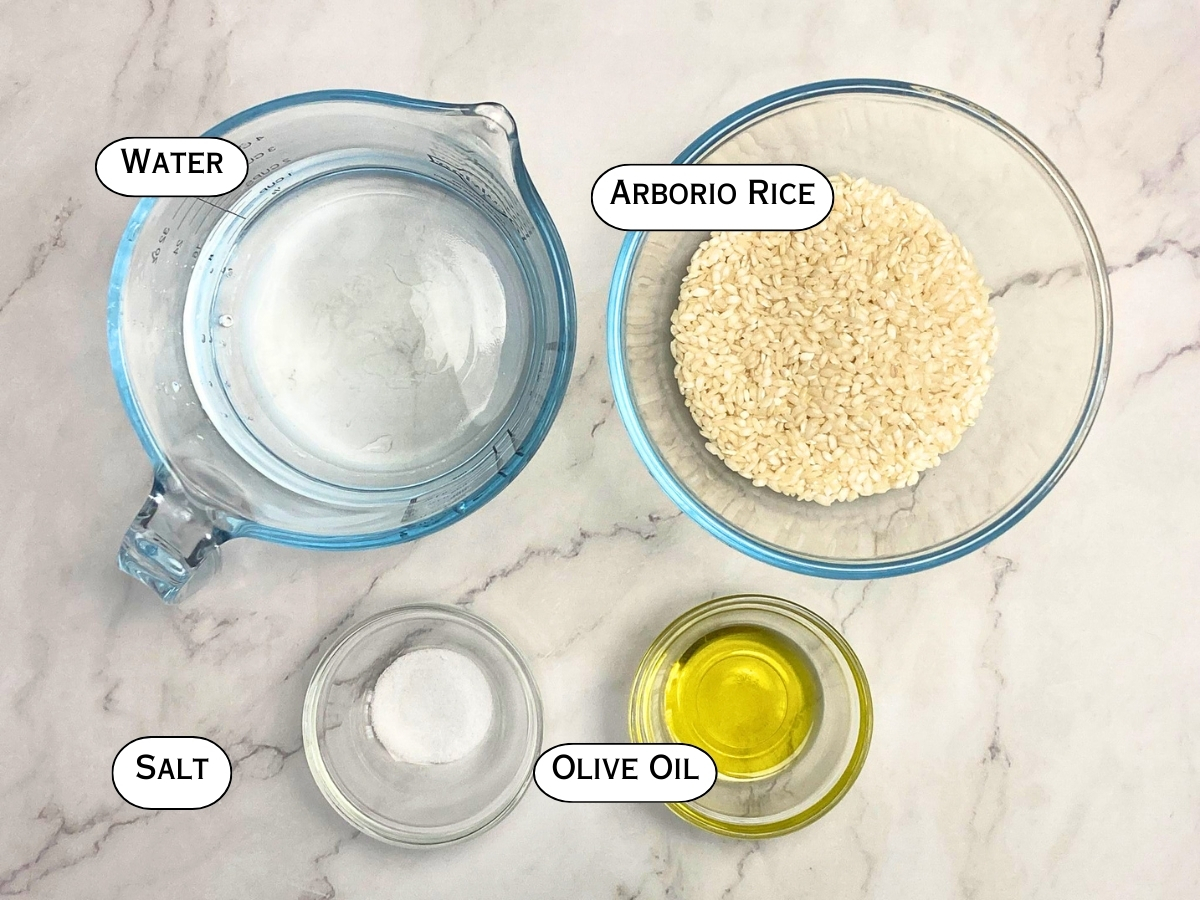
- Rice: When choosing the rice at the grocery store, opt for a box that is labeled as authentic Arborio rice, as this will ensure a good end result. If you are familiar with specific brands, such as Gallo or Scotti, opt for those.
Be sure to check out the recipe card for all the ingredients and instructions you'll need to make this dish. Don't miss out on any of the details!
♻️ Substitutions and Variations
- Broth: Instead of water, you can use vegetable, beef, or chicken broth, depending on what you will serve your rice with. Remember to adjust the salt accordingly.
👩🏻🍳 How To Cook Arborio Rice by Absorption Method

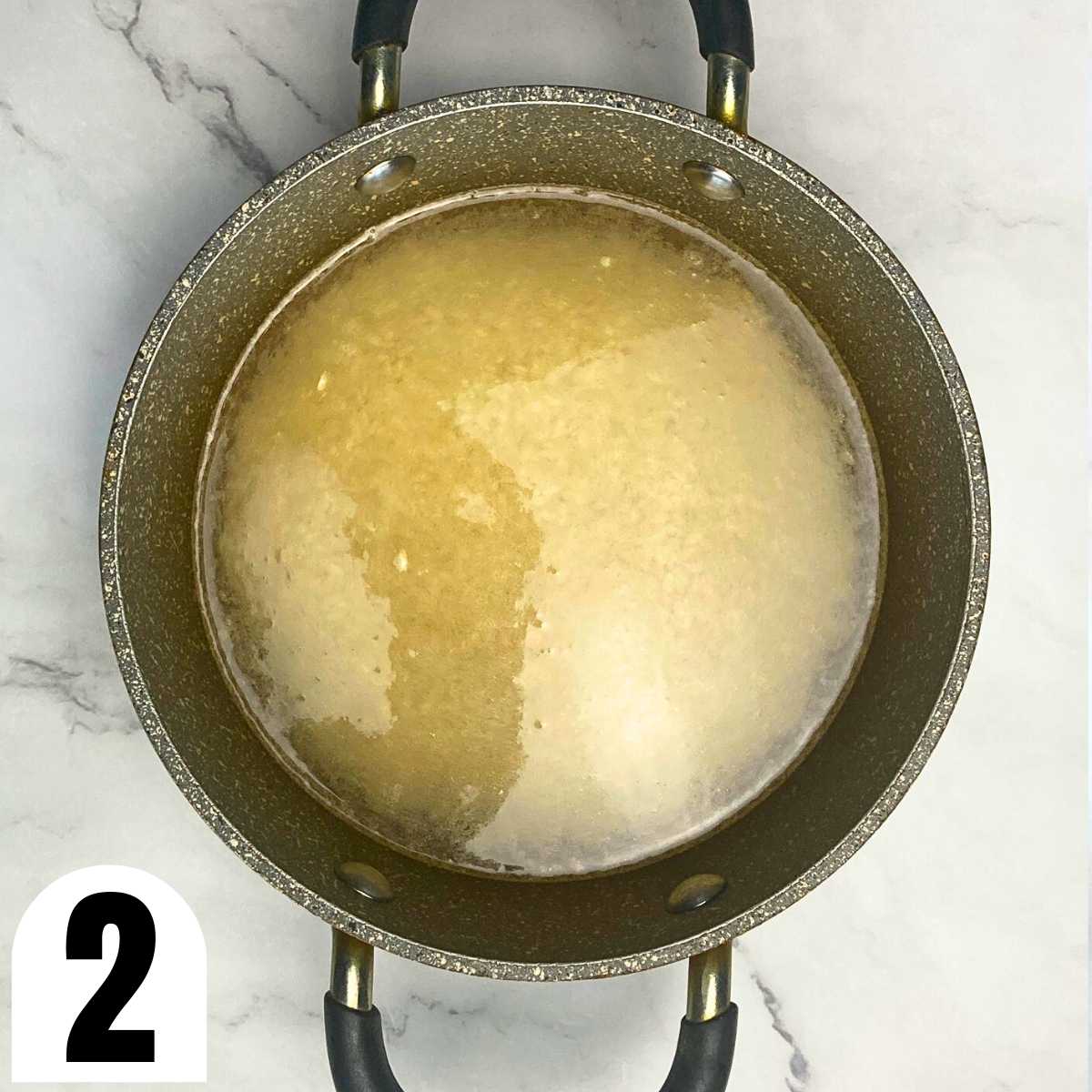
- In a saucepan with a heavy bottom, warm up the extra virgin olive oil on low to medium heat.
- Once warm, add the rice and mix well before it overheats. You want the rice to be gently toasted, not quick fried. [Picture 1] Do not rinse the rice, as this is not needed for this recipe.
- Keep on mixing until all the rice is toasted; it usually takes 2-3 minutes. You will know it is ready as the grains will change color and you will smell the aroma.
- Next, add the water and salt. Mix all of the ingredients well and increase the heat to high. [Picture 2] You will need 2 cups of water for every cup of rice. Arborio rice cooks best when the ingredients are measured by volume rather than weight.

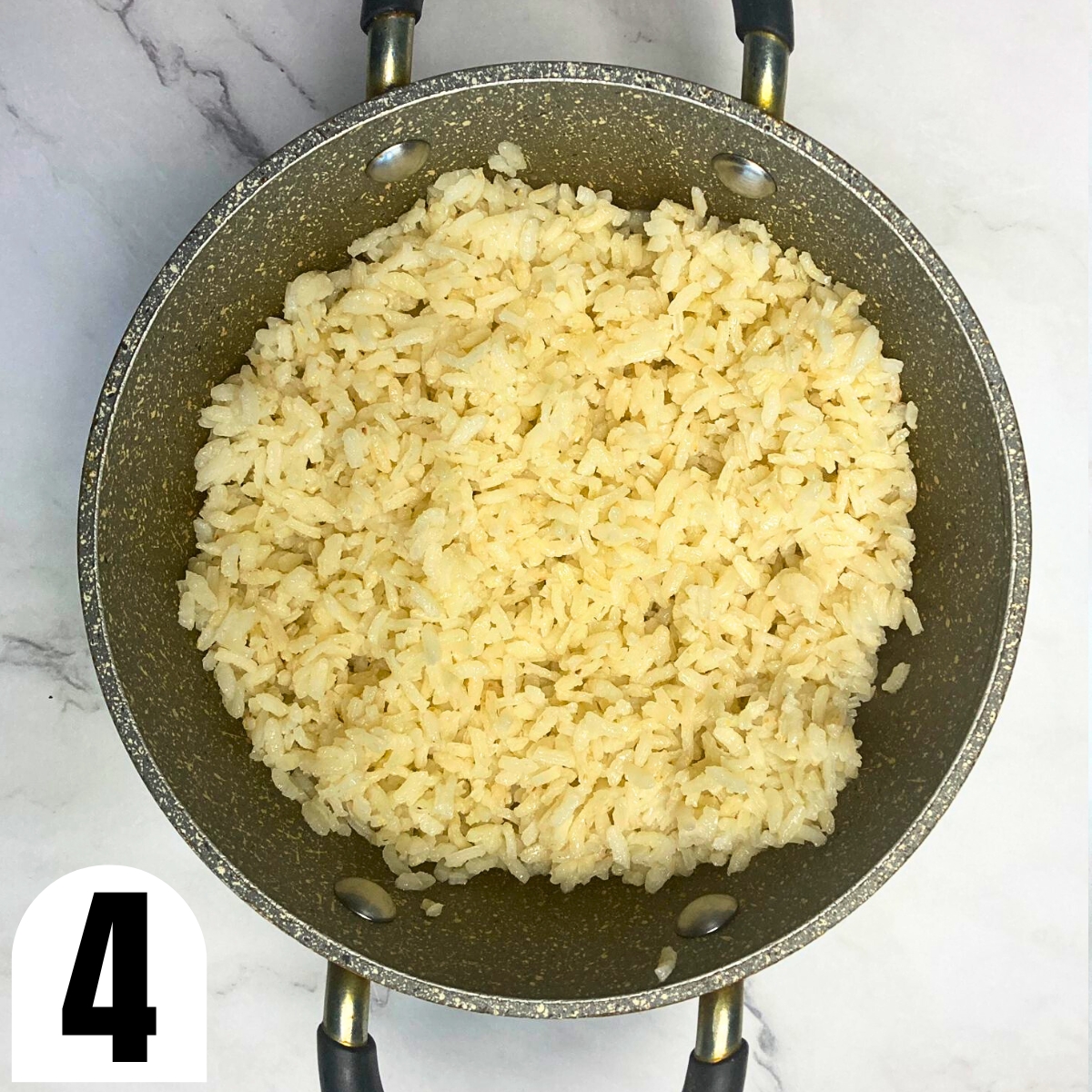
- As soon as the water boils, mix it once more and cover it with a lid. From now until after the cooked arborio rice has rested, you won't lift the lid or mix the rice.
- Immediately reduce the heat to a very light simmer. If necessary, move the saucepan to a smaller burner.
- Cook the rice for exactly 17 minutes.
- Next, switch off the heat and allow the rice to rest covered for 5 minutes.
- Finally, lift the lid [Picture 3] and fluff the cooked rice with a fork or wooden spoon. [Picture 4]
- The rice will be fluffy, perfectly cooked thoroughly, and perfect to serve immediately with sauces or stews.

🙋♀️People Also Ask [FAQs]
Arborio rice is naturally gluten-free. It's a type of grain, and all pure, unprocessed grains are free from gluten. However, always check the packaging to ensure it hasn't been processed in a facility that also handles gluten-containing products, which can lead to cross-contamination.
While arborio rice is famous for its use in risotto, you can also cook it just like regular rice. Its unique ability to absorb flavors makes it a good choice for dishes where you want the rice to soak up a lot of flavor. You can also cook it using the method shown in this article.
When cooking arborio rice, a general rule of thumb is to use a 2:1 water-to-rice ratio. That means you'll need two cups of water for every cup of arborio rice. This ratio may vary slightly depending on the specific cooking method or recipe you're following. For example, when making risotto, broth is added gradually, and the total liquid used often exceeds this ratio.
You can store the cooked rice in an airtight container in the fridge for up to three days, or in the freezer for up to three months. Allow it to thaw overnight in the fridge and then reheat thoroughly in the microwave or in a pan, adding a little liquid if required.
🍴 More Interesting Posts
Have you given this recipe a try? We'd love to hear your thoughts! Please leave us a ⭐ review below, and don't forget to tag us @theperfectrice on Instagram and Pinterest. Your feedback means the world to us, and we really appreciate it. For more recipes, follow us on Pinterest, Facebook, YouTube, and Instagram. Thank you! 🙏
🍽️ Recipe
How To Cook Arborio Rice
Ingredients
- 2 Cups Arborio Rice
- 4 Cups Water
- 1 ½ tablespoon Olive Oil
- Salt to Taste
Instructions
- In a saucepan with a heavy bottom, warm up the extra virgin olive oil on low to medium heat.
- Once warm, add rice and mix well before it overheats. You want a gentle toasting, not a quick frying of the rice. Do not rinse the rice, as this is not needed for this recipe.
- Keep on mixing until all the rice is toasted; it usually takes 2-3 minutes. You will know it is ready as the grains will change color and you will smell the aroma.
- Next, add the water and salt. Mix well all of the ingredients and increase to high heat. You will need 2 cups of water for every cup of rice. Arborio rice cooks best when measuring the ingredients by volume, rather than weight.
- As soon as the water boils, mix it once more, and cover with a lid. From now, until after the cooked arborio rice has rested you won't lift the lid nor mix the rice.
- Immediately, reduce the heat to a very light simmer. Should you need to move the saucepan to a smaller burner, then do so.
- Cook the rice for exactly 17 minutes.
- Next, switch off the heat and allow the rice to rest covered for 5 minutes.
- Finally, lift the lid and fluff the cooked rice with a fork or wooder spoon.
- The rice will be fluffy, perfectly cooked thoroughly and perfect to serve immediately with sauces or stews.
Notes
- Storage: You can store the cooked rice in an airtight container in the fridge for up to three days, or in the freezer for up to three months. Allow it to thaw overnight in the fridge and then reheat thoroughly in the microwave or in a pan, adding a little liquid if required.

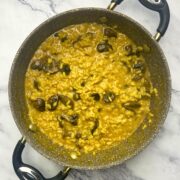

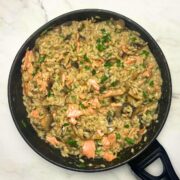
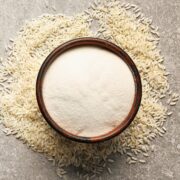
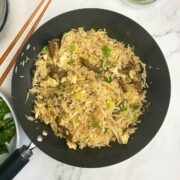

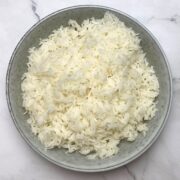


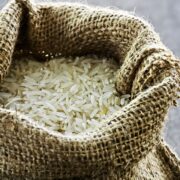
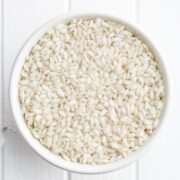






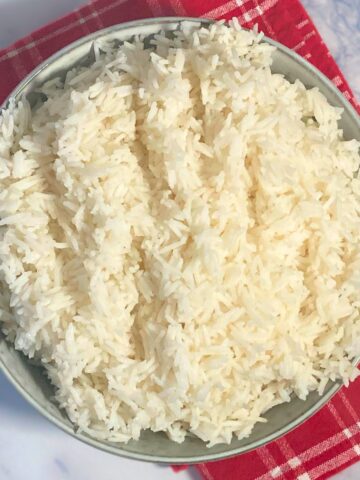

Leave a Comment